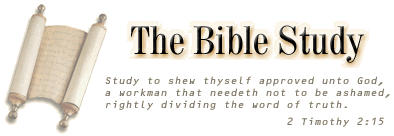Constantine: An Antichrist? Much is written and spoken today concerning the "anti-Christ". A common interpretation of 2 Thessalonians 2:4 [puts forth the belief that an] "anti-Christ" will take [a] position in the rebuilt temple in Jerusalem and will rule the world from this point. [Editor: Note however that 2 Thes. 2:4 never uses the term "anti-Christ," but rather, "man of sin" and "son of perdition."] For this reason, Christians are often warned not to participate in activities concerning the possible rebuilding of the temple.
Historical Background of the Council of Nicea During the third century AD, the Roman empire began to experience decline due both to internal corruption and to external assault. Throughout this time, the Church was growing throughout the empire. Churches were established in every city. Local churches were under the authority of bishops. There were five main or regional centers of authority including: Rome, Ephesus, Antioch, Alexandria, and Carthage. Indeed, it appears that, to some degree, the Church became "a state within the state". During the reign of Decius (249-251) and Diocletian (284-305), general persecutions of the Church were implemented in an effort to destroy it. The opposite occurred. The Church grew in strength and resolve. When Constantine became emperor, he reasoned that the Church could serve as the grassroots backbone for the crumbling empire. He therefore legalized Christianity and made it the official religion of the empire. The fortune of the Church was suddenly reversed. Church property was returned to the Church. Bishops and pastors that had suffered loss during the periods of persecution were given government pensions. Laws were passed that strengthened the position of the Church. For the Church to serve in the capacity envisioned by Constantine, unity was essential. Unfortunately for Constantine, it was at this very time that the Arian dispute arose. Arius was a presbyter at Alexandria. He wrote concerning his belief that Jesus was a "created being". His bishop. Alexander, disagreed with this position and a lively dispute resulted. This dispute spread throughout the Church and threatened to be the source of a major schism. Obviously, such a division in the Church would destroy its role as envisioned by Constantine. The threat felt by Constantine was so strong that he embarked upon the unprecedented calling for an assembly of the bishops from throughout the empire to deal with this question and to resolve the issue. He personally invited the bishops, paid for their conveyance and maintained them through the conference which lasted for two months. Upon convening the assembly, he told the bishops what he expected to be accomplished and even defined their responsibility to the society. Finally, when the council ended, he gave the bishops "valuable" gifts and sent them on their way. He implemented and enforced the findings of the council, even to the point of the death sentence for anyone harboring materials written by Arius. All of this was done by Constantine while he was the undisputed secular world leader. He was not officially a part of the Church during this time. Constantine as a secular world leader literally "took his seat" in the midst of the Church and ruled over it. He usurped the position of the rightful "Lord" of the Church, Jesus the Messiah; therefore, he was an "anti-Christ". Source: Ken Garrison |

